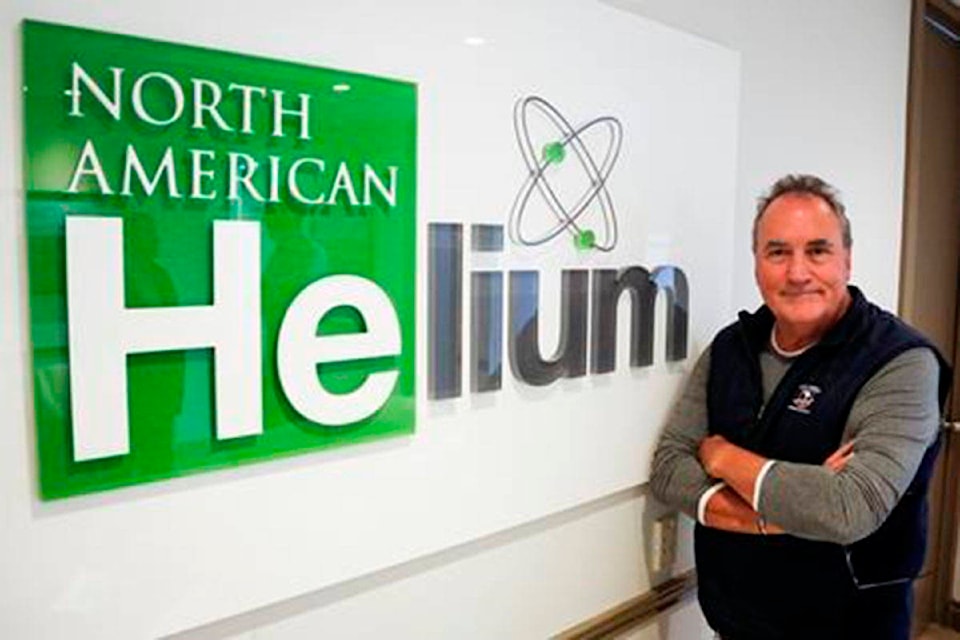A veteran of Canada’s ailing oilpatch is hoping a new product drawn from deep under Prairie grain fields will provide a natural resource boom for Western Canada.
Marlon McDougall, 59, says he wasn’t interested when first approached last year to join a junior exploration company.
After 35 years in the oil and gas industry, he had grown frustrated by its multiplying headaches, including environmental criticism, pipeline constraints, regulatory burdens and the need to adopt expensive new technologies as easy-to-produce pools of oil and gas are depleted.
But New York-based financial manager Nick Snyder, 36, founder and chairman of privately held North American Helium, assured him none of those problems exist with helium, the lighter-than-air product he plans to produce and export.
The rush to get in on a new resource industry recalls the excitement of the oil and gas sector in the ’80s, McDougall, named president and chief operating officer last spring, said in an interview from the company’s modest downtown Calgary offices.
“You do things right,” he said. “You have an idea, you capture land, you shoot seismic, you go out and drill exploration wells, you make discoveries and it just rolls on from there.”
Helium, the second most plentiful element in the universe, is in short supply on Earth.
Demand for the gas once used mainly for military, weather and party balloons has been steadily rising, creating shortages and spiking prices in recent years.
Helium’s unique ability to remain a liquid at extremely low temperatures makes it the cooling agent of choice for superconducting magnets in research and medicine (including MRIs). It’s also essential in rocketry and plasma welding.
READ MORE: New industry develops around sucking carbon dioxide out of atmosphere
The global market for helium, meanwhile, is being thrown wide open by the U.S. government’s decision five years ago to gradually sell off its strategic reserves of the inert gas and turn the market it now heavily influences over to the private sector by 2021.
The environment is ripe for a resurgence of the industry in Saskatchewan, which produced helium from wells for about a decade 50 years ago before foundering due to slumping prices, said Melinda Yurkowski, assistant chief geologist for the Saskatchewan Geological Survey.
“It’s still a lot of rank exploration right now,” she said, adding no one knows how much helium — produced by the decay of radioactive uranium and thorium — the province contains.
Virginia-based Weil Group Resources reactivated two legacy helium wells in 2016 and built a 40-million-cubic-feet-per-year, $10-million helium separation facility at Mankato in the southwest corner of the province.
Helium was trucked to Weil’s liquefaction facilities in the U.S. and sold until the wells were suspended due to production problems in mid-2019. Weil has since drilled a new well to try to restore output.
The company has plans to produce helium in Alberta as well and is considering eventually building a liquefaction facility there to super-cool the gas to liquid form so it can be shipped in high-pressure tanks anywhere in the world, Weil CEO Jeff Vogt said.
Western Canada has an advantage over other new sources of helium in that its best reserves are found in pools made up of 95 per cent nitrogen, said Scott Mundle, an assistant professor and researcher at the University of Windsor in Ontario who has been studying samples from helium explorers.
The nitrogen found can be safely vented to the atmosphere after the one-to-two per cent helium content is removed, because the Earth’s atmosphere is made up of about 78 per cent nitrogen, he said.
Trace amounts of methane and carbon dioxide can also be released with minimal impact on the environment, he added.
The extremely high pressure in reservoirs deeper than two kilometres under the surface means wells can be productive for years before being depleted, said Mundle, outlasting shallower pools elsewhere in the world.
North American Helium is the most active of the handful of companies that have staked out a total of 1.7 million hectares of helium leases and permits in Saskatchewan.
It has drilled 13 new helium wells in southwestern Saskatchewan, with 11 considered commercially viable, and has tentative plans to open a plant to process gas from a single well by mid-2020.
Moving forward with production will depend on signing long-term supply contracts with buyers, who will most likely be from among the big industrial gas suppliers who currently control global distribution, McDougall said.
The potential is huge, Snyder said. North American Helium’s five-year plan includes wells, separation plants and liquefaction facilities to supply a substantial chunk of global demand currently pegged at about seven billion cubic feet per year.
“We think internally a reasonable expectation is that as the (American) fields decline … providing about 10 per cent of global supply — 700 million cubic feet per year — is very much the sweet spot in terms of being achievable and capital efficient with the land base we have.”
READ MORE: Liberals face challenge to climate, economic policies early in 2020
Dan Healing, The Canadian Press
